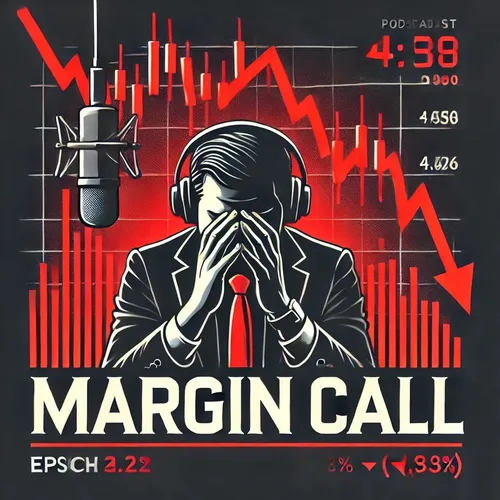Margin Calls, Short Squeezes Expose Risks of Leveraged Trading
- Author
- Quiet. Please
- Published
- Sat 19 Jul 2025
- Episode Link
- https://www.spreaker.com/episode/margin-calls-short-squeezes-expose-risks-of-leveraged-trading--67036683
Margin calls, short positions, and the concept of short positions being “in trouble” are central to the understanding of volatile market events. In margin trading, listeners borrow money from a broker or exchange to buy or sell assets, enabling a larger position than their available capital would otherwise allow. This leverage amplifies both potential gains and losses. To protect against excessive losses, brokers set minimum margin requirements. If the value of the investor’s account falls below this threshold, a margin call is triggered. At this point, the listener must quickly deposit additional funds or collateral to restore the margin level. Failure to do so often leads to the broker forcibly closing positions, sometimes at a significant loss to the investor, to recover the borrowed capital.
Short selling, or holding a short position, involves betting that the price of an asset will decrease. Here, a trader borrows assets, sells them at the current price, and aims to repurchase them later at a lower price, returning the asset and pocketing the difference as profit. The risk, however, is theoretically unlimited since there’s no cap on how high a price can climb. When markets move dramatically upward, those holding large short positions may face mounting losses far beyond their initial investment.
In periods of heightened volatility or unexpected upward movement in a stock or crypto asset, short sellers may experience what’s known as a short squeeze. As prices rapidly rise, margin requirements also increase. Many short sellers are unable to meet margin calls quickly enough. According to AInvest, sudden price swings can trigger a cascade of liquidations. If traders with leveraged short positions can’t add collateral rapidly, their positions are automatically closed out, often at the worst possible price. This domino effect can worsen as every forced buy-in to cover a short amplifies the upward price momentum, trapping more short sellers.
Trading platforms enforce this risk management through mechanisms like the Stop Out. If an account’s equity continues to decline after a margin call, and the margin level hits another lower limit, the broker will start force-closing trades to protect itself from further losses. Forex.wikibit.com explains that these Stop Outs prioritize closing the least profitable positions first. In fast-moving markets, this process can lead to a rapid cycle of forced liquidations, compounding volatility and exposing the most heavily leveraged short positions to devastating losses.
Short positions become particularly vulnerable in environments that see abrupt price surges, whether due to macro events, regulatory surprises, or shifts in investor sentiment. Those who do not have the liquidity or collateral to meet margin calls can find themselves wiped out within minutes, as highlighted by the $101 million in crypto liquidations in a single hour recently reported by AInvest. Excessive leverage, lack of proper risk management, and failure to have a trading plan significantly increase the likelihood of margin calls and being caught in the wave of short positions in trouble.
Ultimately, while margin trading and short selling are tools for sophisticated strategies, they carry inherent and often misunderstood dangers. Leveraged trading increases the exposure to market swings, making the proper management of collateral, risk, and trading discipline indispensable. Emotional or impulsive trading, combined with high leverage, almost certainly increases the risk of dramatic loss, especially when large numbers of short positions are caught offside by a rapidly rising market.
Thank you for tuning in, and don’t forget to subscribe. This has been a Quiet Please production, for more check out quietplease dot ai.
For more http://www.quietplease.ai
Get the best deals
